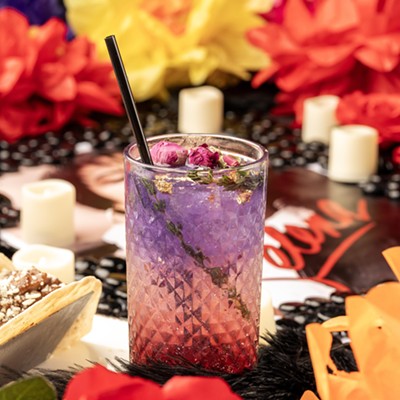The first thing I noticed upon returning to Houston after 14 years away? Flipping citrus is everywhere.
In December, when I arrived, a laden grapefruit tree was around every corner, satsumas fell and gathered beneath their bushes, bright lemons winked from boughs, and kumquats -- those pellets of pure Vitamin C -- were just getting started.
Growing up here in the 1970s, I recall only the occasional banana tree, the kumquats, and loquats on their sharp-leafed dusky trees. They were all a mystery -- and the loquats were relegated to the birds.
Now I'm officially an Overeager Citrus Person.
This can lead to mistakes. For instance, not long ago, I had juice from a lemon in a Clear Lake backyard. Shockingly, it was sweet. I was amazed by its frothy, forgiving flavor.
We gathered bags of the lemons, took them home and rejoiced when juice at home tasted just as good as from the bush.
The lemon's identity remained a mystery. My friend in Clear Lake had been given permission to pick an out-of-town neighbor's fruit, and she didn't know the tree's name. After a flurry of online research and asking around, I found a piece in the LA Times about Persian lemons.
Wow, I thought: Sweet lemons with a pleasing history. In the LA Times piece, a child had planted a Persian lemon seed and it became a thriving shrub. This was unusual in the citrus world, where most trees must be grafted.
At my next stop, Central Market, I stood before a bin of fragrant citrus that looked like those in the LA Times piece on Persian lemons. Each was headily perfumed, in the way that rose water wafts a scent.
At home, I compared my newly acquired citrus with those from Clear Lake and realized: Ouch, no dice.
My Clear Lake lemons were thick-skinned and bumpy and had knobs of citrus flesh at each stem end. They lacked the Persian fruit's perfume.
It was humbling. Maybe this type of mistake isn't so unusual, though, considering that the Houston area now has more than 70 varieties of citrus, according to Buchanan's Native Plants, and that gardener John Panzarella now grows nearly 200 types of citrus in his yard along Lake Jackson's Oyster Creek, 50 miles southwest of Houston.
Why the sudden explosion of citrus? It's about advances in grafting techniques, says Buchanan's David Haynes.
"Advances...have made a wide variety of frost-tender citrus available to Texans, and especially Houstonians, that previously were unheard of," says Haynes. "Gone are the days when we were able only to grow kumquats and satsumas."
As for my bumpy Clear Lake lemons, Diana Riga from Urban Harvest thought they might be Ujukitsu, a Japanese varietal brought to the United States in the 1960s.
With all this local-fruit abundance, chefs are snapping up Houston-grown citrus.
"Houston grows great citrus varietals," says Sparrow owner and chef Monica Pope. "Using them has been one of our givens, as common to us as using greens and shell beans, peas and okra."
Sparrow uses Meyer lemons in a cocktail with spiced rum, maple syrup, dark rum and baked-apple bitters.
Ever tried making a decent cocktail from peas and okra? Houston-grown citrus, it's here to stay.





